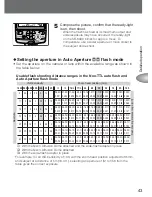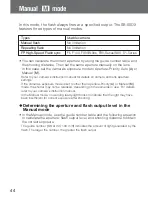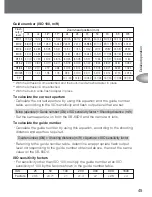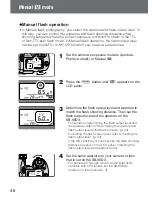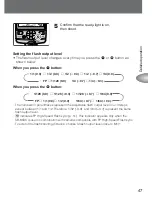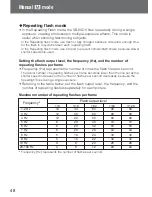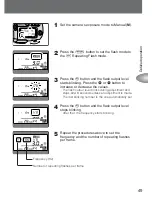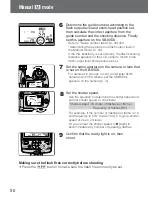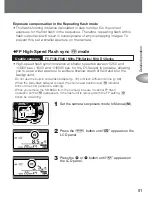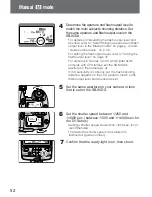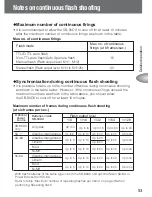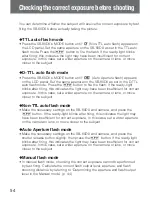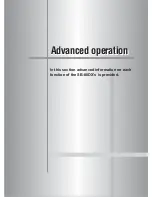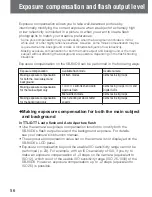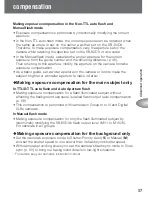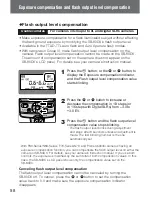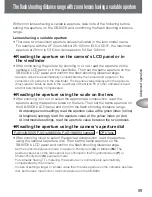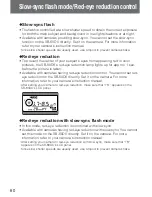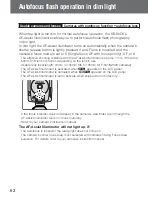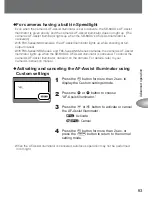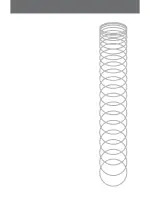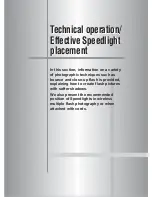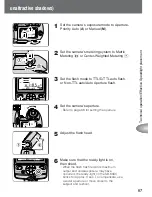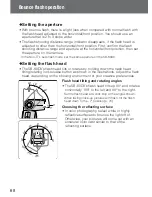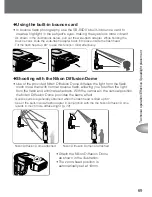
57
Advanced operation
compensation
Making exposure compensation in the Non-TTL auto flash and
Manual flash mode
m
Exposure compensation is performed by intentionally modifying the correct
aperture.
m
In the Non-TTL auto flash mode, the correct exposure can be obtained when
the same aperture is set on the camera as that set on the SB-80DX.
Therefore, to make exposure compensation, vary the aperture set on the
camera while retaining the aperture set on the SB-80DX or vice versa.
m
In the Manual flash mode, calculate the proper aperture for the correct
exposure from the guide number and the shooting distance (p. 45).
Then referring to this aperture, modify the aperture on the camera to make
exposure compensation.
m
As a basic guide, set a wider aperture on the camera or lens to make the
subject brighter or a smaller aperture to make it darker.
l
Making exposure compensation for the main subject only
In TTL/D-TTL auto flash and Auto Aperture flash
m
Making exposure compensation for a flash illuminated subject without
affecting the background exposure is called flash output level compensation
(p. 58).
m
This compensation is performed with cameras in Groups I to III and Digital
SLRs cameras.
In Manual flash mode
m
Making exposure compensation for only the flash illuminated subject by
intentionally modifying the SB-80DX’s flash output level (M1/1 to M1/128).
For cameras in all groups.
l
Making exposure compensation for the background only
m
Set the camera’s exposure mode to Shutter-Priority Auto (
S
) or Manual (
M
),
and set the shutter speed to one slower than its flash sync shutter speed.
m
With cameras providing slow-sync, set the camera’s flash sync mode to Slow-
sync (p. 60) to bring out background details in low-light situations.
n
For details, see your camera’s instruction manual.
Содержание autofocus speedlight SB-80DX
Страница 1: ...En Instruction Manual Autofocus Speedlight SB 80DX SB 80DX En ...
Страница 64: ......
Страница 106: ...Notes ...
Страница 107: ......

